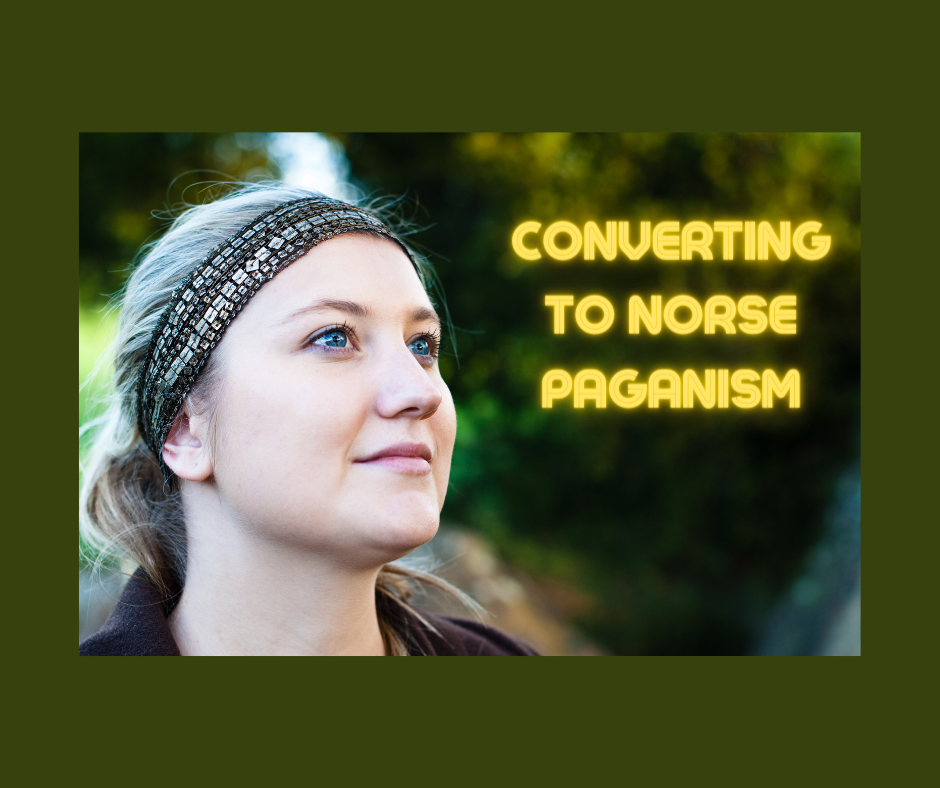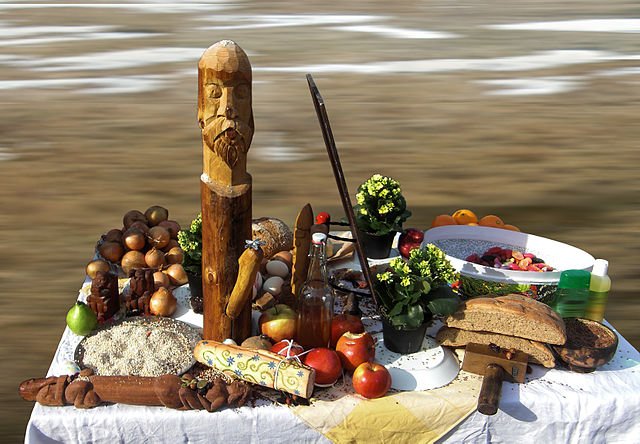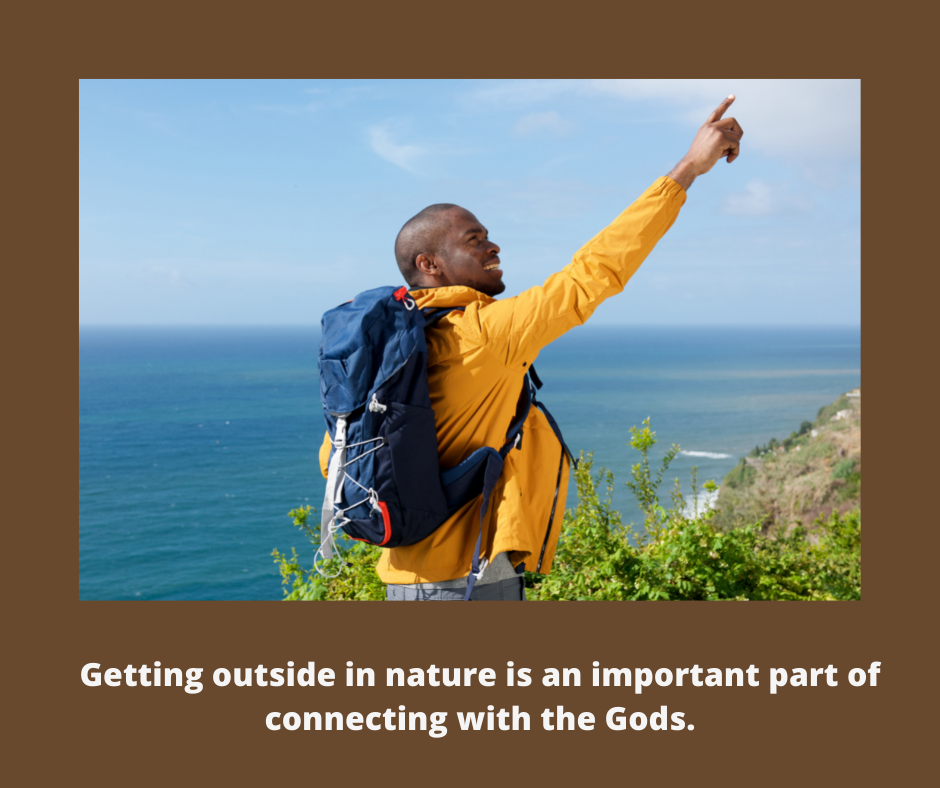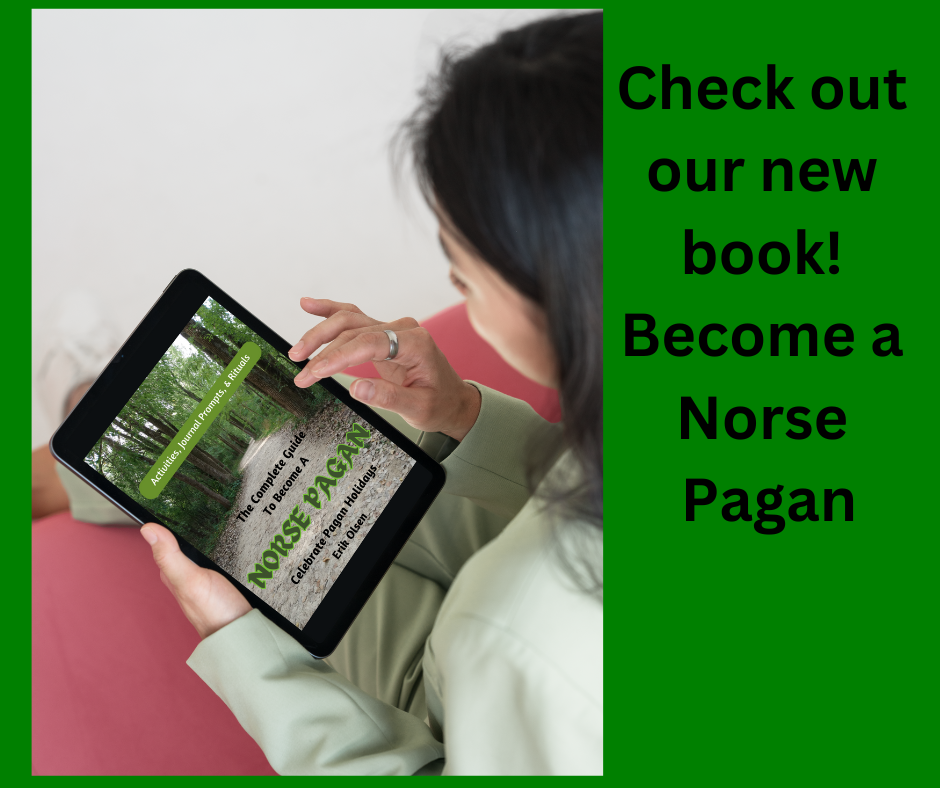So, you want to become a Norse pagan? That's great! In general, pagan religions don’t ask you to convert, proselytize, or profess allegiance to a single God.
Norse paganism is open to anyone who believes in their deities and practices. There is a growing interest in Nordic religions. In fact, the old Norse religion is going through a major revival.
Keep reading to learn what you can do to become a follower and some of the main branches of the Nordic religion.
Can You Convert To The Norse Pagan Religion?
Yes, it is possible to become a Norse Pagan. There are no initiation ceremonies like in some other religions, but there are a few things that you need to do in order to fully convert.
You might feel a call to Norse beliefs. Sometimes the Gods and Goddesses speak to us in dreams or while we are meditating.
Some people start exploring their ancestry and find they have roots in Scandinavia or Germany. In exploring those ancestors you might feel intrigued by the “Old Ways”.
Follow your heart and the three steps below to become a Norse pagan.
Your Three-Step Guide to Becoming a Norse Pagan
Step One: Learn
First, you must learn about the Nordic religion and our gods and goddesses.
Read and Learn. Don’t skip this step because you think you can learn along the way. It’s important to have the knowledge base so that you can communicate with the deities and understand the passion we feel for this way of life.
There is no one source of information that tells us what to do such as the Christians using the bible.
We do have the writings of Prose Edda. Written by Icelandic historian Snorri Sturluson c. 1220 the Prose Edda was written as a complete guide to the Nordic deities. It is a wonderful collection of stories and poems.
It is a large piece of work and something that needs to be read over time.
A great family book that can be read together is D'Aulaires' Book of Norse Myths.
Not a reader?
Neil Gaiman, the famous comic author, reads his audiobook Norse Mythology and it’s “sit on the edge of your seat” suspenseful. I listened while traveling in my car and found myself gripping the wheel to hear what happened next.
There are also some fabulous YouTube channels that you can watch. I enjoy ‘The Wisdom of Odin’.
Altar with votive offerings from the Spring Blót held by Sveriges Asatrosamfund (The Swedish Asatru Society) on 4th April 2010 at Kungshögarna at Gamla Uppsala, Uppland, Sweden. The Norse Deities Freya, Thor, and Odin are represented. Food offerings and spring flowers are also represented. Photo by Gunnar Creutz.
Step Two: Practice
Next, you must adopt the Norse worldview, which means accepting the idea that religion is your personal belief and not something that you only think is nice to talk about with friends. Living an honorable life is an important concept to practice.
One thing I love about being a Norse Pagan is that I can choose which Gods or Goddesses I want to worship. No one tells me who I must worship. I make that decision.
Connecting with the Gods is an evolving process. Your relationships will change. You will want to honor different deities depending on the time of year and what you are experiencing in your personal life.
There will be times a deity reaches out to you. You must be open and willing to listen to their message.
Build an Altar
An altar is a place where you practice your religion (but not the only place!) Typically this is an area in your house that you set aside to honor the gods.
This does not have to be fancy. Start talking to a chosen deity. Ask for help with a problem. The gods want to communicate with you.
Check out our article on How To Set Up A Norse Pagan Altar
Step Three: Connect With The Natural World
Connecting with the rhythms of the natural world is very important.
Our Nordic Ancestors were farmers and hunters. They gathered herbs from the woods for healing. They were intrinsically connected with their natural environment.
Norse paganism revolves around natural forces. The sun, moon, and changing seasons are important.
Animals are also important symbols in Norse mythology. You can read more about Norse animals on the blog.
Pagans believe that nature is sacred and that spiritual enlightenment comes through the natural cycles of birth, growth, and death. Human beings are one part of nature, together with animals, trees, stones, plants, and everything else on earth.
Read our Introduction to Norse Paganism by Goði Anlengðarclan.
Below is a great video from Jacob Toddson. Check out his YouTube Channel The Wisdom of Odin
Groups of Norse Pagans
There are several groups of Norse pagans. You don’t have to “belong” to any one group but many people associate with one or the other for their core beliefs.
There are also smaller local groups. Google your city or state and Norse pagan. Make sure you investigate the group to know they have the core values you wish to emulate. Feel free to email them and ask questions.
Having a group or a kindred is a great way to build community and have a support system. Often groups will celebrate blots together.
Forn Sidr
Forn Sidr is an Old Norse term that means "The Ancient Custom". Starting in Scandanavia it's a way to seek out the original meaning of their ancestors' faith.
Today’s Forn Sidr is open to all people who wish to follow this pagan path. The Forn Sidr of America states that “An American Heathen spiritual identity rooted in Ancient Norse beliefs with modern evolving values that place the inherent worth of all people before creeds, dogma, or doctrine.”
Heathenry
Heathenry is a polytheistic belief that worships the Norse gods. It is a reconstructionist religion, which means that it aims to reconstruct the pre-Christian religion of the Norse and Germanic people.
Heathenry isn't a denomination. As most Heathens will tell you: there never was a "Heathenry" in the past, we were simply heathens and pagans.
Nowadays many people call themselves Heathens yet walk different paths. Many heathens focus on one or several Norse gods or goddesses to follow and worship.
For some, it may be more about reconstructing ancient history and archaeological finds while others focus on Germanic mythology and folklore.
I believe all of these paths lead to the same core or essence of our ancestors' faith.
Asatru
Asatru is the name of the specific branch of the Nordic faith that focuses on the worship of the Norse gods. It began in 1972 in Iceland with the goal of revitalizing the ancient ways of Germanic paganism.
Asatru is a branch of reconstructionism which means that it's a branch based on the history and culture of the ancient Norse people. They seek out the old ways by studying the writings of Sturluson and seeking information from contemporary archaeologists.
They believe the gods are living beings who take an active role in the world and its inhabitants.
Is The Norse Pagan Religion Still Practiced Today?
Yes, although it is a small minority religion when compared to the Abrahamic religions (Christianity, Judaism, and Islam). However, paganism as a whole is one of the fastest-growing religions in America and Western Europe.
According to Icelandic population statistics, Asatru is the fastest-growing religion in Iceland.
Read our article Paganism Is On The Rise to learn more.
Author, Erik, recently graduated college with a degree in Anthropology. While in school he completed an internship with the Smithsonian Museum of Natural History which led him to his current museum position.
Erik desires to be a Viking when he grows up and has worked in Outdoor Adventure leading hikes and rafting trips. A solitary Wiccan, Erik writes about Wicca, Norse religion, and making altars.









Totemism and animal spirit guides are common in the Nordic religion. Odin, the Allfather, had several animals that assisted him.
In this article, we will talk briefly about the concept of totemism and animal spirit guides. I will then give you a complete list of Norse deities and their mythological animals, totem, or allocated spirit guides